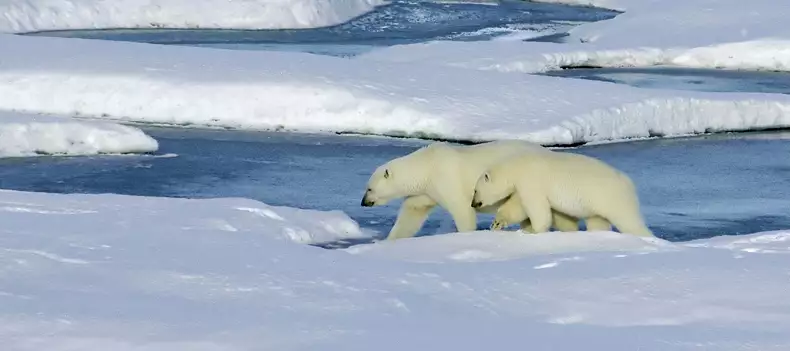Exploring the Ends of the Earth: A Journey into the Polar Regions

Exploring the Ends of the Earth: A Journey into the Polar Regions
The polar regions, encompassing the Arctic and Antarctic, stand as the last frontiers of our planet, where the forces of nature reign supreme and the extremes of climate test the limits of human endurance. These icy realms, shrouded in mystery and wonder, are home to some of the most awe-inspiring landscapes and fascinating wildlife on Earth. As we embark on a journey into the polar regions, we are drawn into a world of breathtaking beauty, ecological significance, and unparalleled adventure.
The Arctic, a vast expanse of ice and tundra encircling the North Pole, is a region of stark contrasts and dramatic transformations. In the summer months, the sun hangs low on the horizon, casting an ethereal glow over the landscape and igniting fields of wildflowers in a riot of color. In the winter, darkness descends, enveloping the Arctic in an icy embrace as temperatures plummet and the Northern Lights dance across the sky in a mesmerizing display.
Despite its harsh climate, the Arctic teems with life, from polar bears prowling the sea ice in search of seals to reindeer grazing on mosses and lichens in the tundra. Bird species such as puffins, guillemots, and Arctic terns flock to the region to breed, while whales, including belugas and narwhals, navigate its icy waters in search of food. For millennia, indigenous peoples such as the Inuit and Saami have called the Arctic home, relying on its resources for sustenance and survival.
In contrast, the Antarctic, a frozen wilderness at the southernmost tip of the planet, presents a landscape of unparalleled grandeur and solitude. Towering icebergs, sculpted by the relentless forces of wind and water, dot the frigid waters of the Southern Ocean, while glaciers, some as vast as entire countries, flow inexorably toward the sea. In the interior, the Antarctic Ice Sheet, covering an area larger than Europe, holds nearly 70% of the world's fresh water, serving as a critical regulator of global climate and sea levels.
Despite its seemingly inhospitable environment, the Antarctic teems with life, both above and below the ice. Penguins, seals, and seabirds congregate on its rocky shores and ice floes, forming bustling colonies that pulse with activity during the short summer months. Beneath the surface, a rich tapestry of marine life thrives in the frigid waters, from krill, the foundation of the Antarctic food web, to colossal squid and elusive deep-sea fish.
The polar regions are not only bastions of biodiversity but also barometers of global climate change. As temperatures rise and ice melts at unprecedented rates, the Arctic and Antarctic are experiencing rapid transformations with far-reaching implications for ecosystems and communities around the world. Melting ice caps contribute to rising sea levels, threatening coastal cities and ecosystems, while changes in sea ice dynamics disrupt the migratory patterns of marine species and the traditional ways of life of indigenous peoples.
As we venture into the polar regions, we are reminded of the fragility and resilience of our planet. These remote wildernesses, far removed from the hustle and bustle of human civilization, serve as sanctuaries of nature, where the rhythms of life unfold in harmony with the elements. Yet, they also bear witness to the profound impact of human activity on the environment and the urgent need for global cooperation to address the challenges of climate change and conservation.
In conclusion, the polar regions beckon us with their pristine beauty, ecological significance, and untamed wilderness. As we journey into these icy realms, we are humbled by the forces of nature and inspired by the resilience of life in the harshest of environments. In protecting the polar regions, we safeguard not only the biodiversity and ecological integrity of these remote wildernesses but also the future of our planet and generations to come.
- Arts
- Business
- Computers
- Jocuri
- Health
- Home
- Kids and Teens
- Money
- News
- Recreation
- Reference
- Regional
- Science
- Shopping
- Society
- Sports
- Бизнес
- Деньги
- Дом
- Досуг
- Здоровье
- Игры
- Искусство
- Источники информации
- Компьютеры
- Наука
- Новости и СМИ
- Общество
- Покупки
- Спорт
- Страны и регионы
- World


